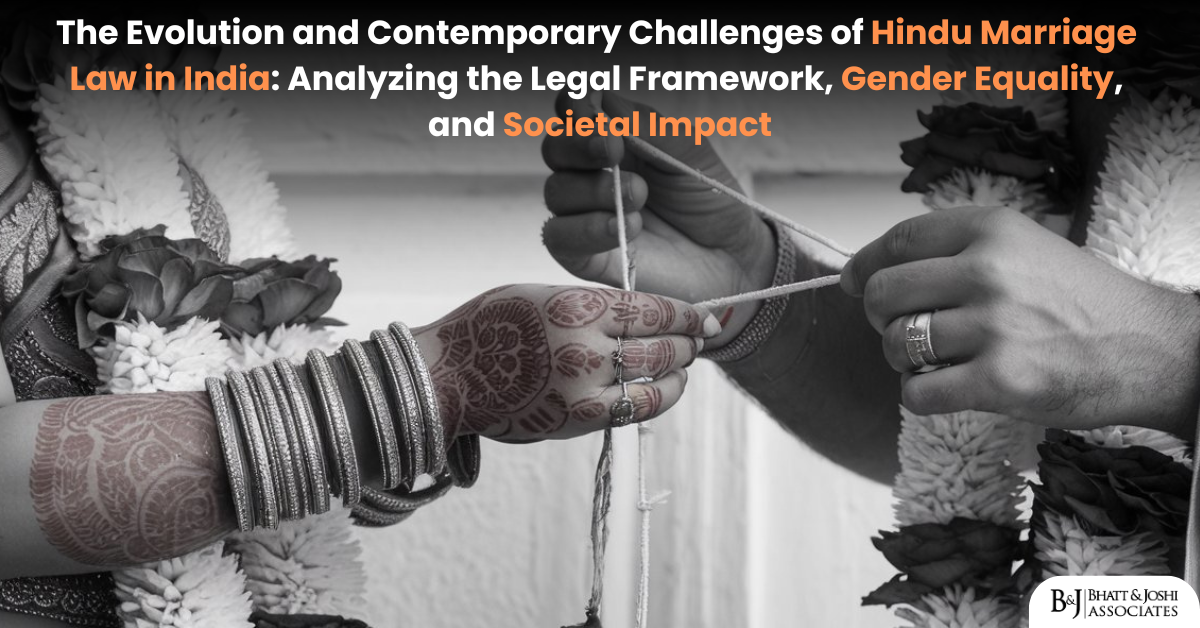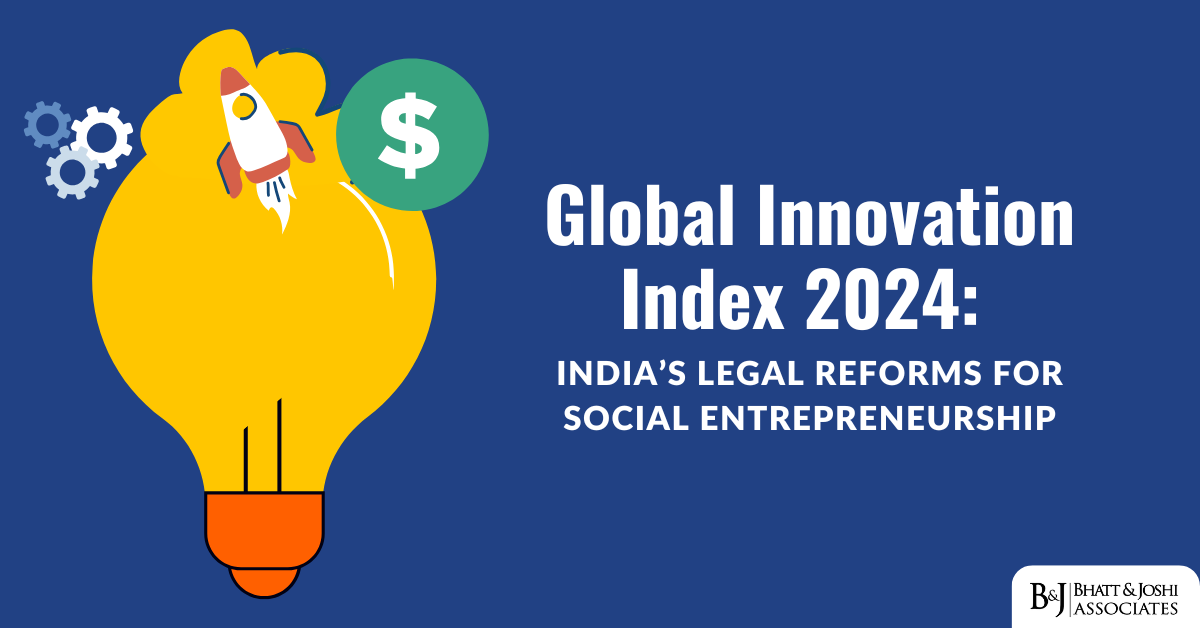Introduction
Hindu marriage law in India has undergone a significant transformation from its ancient roots in religious and cultural traditions to its current legal framework under the Hindu Marriage Act of 1955. This transformation has been driven by the need to align traditional practices with modern principles of justice, gender equality, and individual rights. The Hindu Marriage Act, one of the first major pieces of legislation in independent India to regulate personal law, reflects a blend of ancient customs and contemporary legal norms. The Act has been pivotal in shaping matrimonial relationships in Hindu society, but it also faces numerous contemporary challenges, particularly in terms of gender equality and societal acceptance. This article explores the evolution of Hindu marriage law, its contemporary challenges, and its broader societal impact, focusing on how these laws interact with cultural norms and gender roles.
Historical Context of Hindu Marriage Law in India
Marriage in Hindu culture is not merely a social contract; it is considered a sacred, lifelong commitment and a fundamental rite of passage known as ‘samskara.’ The Vedas, Smritis, and Dharmashastras, which form the cornerstone of Hindu jurisprudence, detail various aspects of marriage, including its spiritual significance, societal duties, and familial roles. The Dharmashastras, for instance, emphasize the sacramental nature of marriage, viewing it as an indissoluble bond that must be maintained through life’s challenges. Marriages were traditionally arranged by families, with an emphasis on compatibility, social status, and adherence to religious norms.
During the British colonial era, the need to reform certain practices within Hindu society became apparent. The colonial administration’s intervention in personal laws, through acts such as the Widow Remarriage Act of 1856 and the Age of Consent Act of 1891, laid the groundwork for future reforms. However, these changes were often viewed with skepticism by the Hindu community, which perceived them as attempts to undermine traditional values and impose Western ideologies.
The post-independence period marked a significant shift in the approach to Hindu personal law. The framing of the Hindu Code Bill in the 1950s, which included the Hindu Marriage Act of 1955, was a landmark moment in the codification and modernization of Hindu laws. The debates surrounding the Hindu Code Bill highlighted the tension between tradition and modernity, as lawmakers sought to create a legal framework that respected religious customs while promoting social justice and gender equality. The eventual enactment of the Hindu Marriage Act represented a compromise between these competing values, setting the stage for the evolution of Hindu marriage law in contemporary India.
The Hindu Marriage Act, 1955: Key Provisions and Objectives
The Hindu Marriage Act of 1955 was a pioneering piece of legislation that sought to provide a comprehensive legal framework for Hindu marriages. It aimed to protect individual rights within marriage, promote gender equality, and regulate matrimonial relationships in a manner consistent with constitutional principles. The Act applies to Hindus, Buddhists, Jains, and Sikhs and has several key provisions that address various aspects of marriage, including the conditions for a valid marriage, divorce, maintenance, and alimony.
Conditions for a Valid Marriage: The Act outlines specific conditions for a valid marriage, emphasizing the importance of consent, mental and physical capacity, and adherence to customary practices. These conditions are designed to ensure that marriages are entered into voluntarily and with a full understanding of the rights and responsibilities involved. The prohibition of marriages within certain degrees of prohibited relationships, unless allowed by custom, reflects a concern for the well-being of the parties and the preservation of social harmony.
Monogamy and Prohibition of Bigamy: The Act introduced the concept of monogamy as a legal requirement for Hindus, prohibiting bigamy and polygamy. This was a significant departure from traditional practices that allowed men to have multiple wives under certain circumstances. The prohibition of bigamy was intended to promote gender equality and protect women’s rights, ensuring that they are not subjected to the injustice of sharing a spouse. However, the implementation of this provision has faced challenges, particularly in rural areas where customary practices continue to influence social norms.
Divorce and Judicial Separation: The Hindu Marriage Act marked a radical shift in Hindu matrimonial law by introducing the concept of divorce. Traditionally, Hindu marriages were considered indissoluble, with no provision for ending the marriage except through death. The Act provided for various grounds for divorce, including cruelty, adultery, desertion, and mutual consent, reflecting a recognition of individual autonomy and the need to address situations where a marriage has become untenable. The inclusion of mutual consent as a ground for divorce was particularly progressive, allowing couples to dissolve their marriage amicably without attributing fault to either party.
Maintenance and Alimony: The Act includes provisions for maintenance and alimony, ensuring that the financial needs of the dependent spouse, usually the wife, are addressed following a divorce. These provisions are crucial for protecting women’s economic rights and promoting gender equality within marriage. They reflect an understanding of the socio-economic realities of the time, where women often lacked economic independence due to limited access to education and employment opportunities. However, the implementation of these provisions has been uneven, with many women facing difficulties in securing adequate support due to societal pressures and legal obstacles.
Evolution of Hindu Marriage Law: Judicial Interpretations and Amendments
Since its enactment, the Hindu Marriage Act has undergone several amendments and has been shaped significantly by judicial interpretations. The judiciary has played a crucial role in expanding the scope of the Act to address emerging issues and align with contemporary social norms.
Irretrievable Breakdown of Marriage: One of the most significant judicial developments in Hindu marriage law has been the recognition of ‘irretrievable breakdown of marriage’ as a ground for divorce. This ground was introduced to address situations where a marriage has become unworkable due to irreconcilable differences between the parties. The Supreme Court of India, in several landmark judgments, has emphasized the importance of allowing individuals to exit dysfunctional marriages to uphold their personal dignity and autonomy. This development reflects a shift towards a more humane and realistic approach to divorce, recognizing that a marriage should not be maintained at the cost of individual happiness and well-being.
Gender Equality and Women’s Rights: Judicial interpretations have also played a pivotal role in advancing gender equality within Hindu marriage law. The courts have expanded the definition of cruelty to include not only physical violence but also mental and emotional abuse, reflecting a growing understanding of the complexities of marital relationships. This broader interpretation has provided greater protection for women, who are often more vulnerable to psychological abuse due to societal pressures and expectations. In addition, the judiciary has consistently upheld the principle of non-discrimination in matters of maintenance and alimony, ensuring that women receive fair financial support following a divorce. The courts have recognized the need to provide adequate support to women, particularly in cases where they have sacrificed their careers or educational opportunities for the sake of the marriage. This recognition of women’s economic contributions to the household has been a significant step towards promoting gender equality in matrimonial matters.
Custody and Guardianship: The issue of child custody and guardianship has also seen progressive developments in Hindu marriage law. Traditionally, custody decisions favored the father, reflecting patriarchal norms that viewed women primarily as caregivers rather than decision-makers. However, recent judicial trends have shifted towards prioritizing the best interests of the child, recognizing the importance of both parents’ roles in the upbringing of a child. This shift has been accompanied by a greater emphasis on joint custody arrangements and shared parenting responsibilities, reflecting a more equitable approach to family law.
Gender Equality and Hindu Marriage Law
Gender equality is a fundamental principle enshrined in the Indian Constitution, and its realization within the framework of Hindu marriage law has been a central focus of legal reforms and judicial interpretations. Despite significant progress, several challenges persist in achieving true gender parity in matrimonial matters.
Societal Attitudes and Cultural Norms: One of the major obstacles to achieving gender equality within Hindu marriage law is the persistence of traditional societal attitudes and cultural norms that perpetuate gender stereotypes and inequalities. In many parts of India, marriage is still viewed as a sacrament rather than a contract, and women are often expected to conform to traditional gender roles as dutiful wives and mothers. These expectations can limit women’s autonomy and decision-making power within marriage, making it difficult for them to assert their rights or seek legal redress in cases of abuse or injustice.
Economic Dependence and Access to Resources: Economic dependence on their spouses continues to be a significant barrier for many women in exercising their rights under the Hindu Marriage Act. Despite legal provisions for maintenance and alimony, many women face difficulties in securing adequate financial support due to lack of access to legal resources, societal pressures, and the often-lengthy process of litigation. Economic empowerment and access to resources are crucial for enabling women to make informed choices about their marriages and to seek justice in cases of marital disputes.
Child Marriage and Its Implications: Child marriage remains a pervasive issue in India, particularly in rural and economically disadvantaged communities. Despite the legal prohibition of child marriage under the Prohibition of Child Marriage Act, 2006, the practice continues, often with tacit social and familial approval. Child marriages not only violate the provisions of the Hindu Marriage Act but also perpetuate gender inequality by denying young girls their right to education, health, and personal development. Addressing the issue of child marriage requires a multi-faceted approach that includes legal enforcement, community awareness, and socio-economic support for affected families.
Societal Impact of Hindu Marriage Law
The Hindu Marriage Act has had a profound impact on Indian society, influencing social norms and practices related to marriage and family life. By providing a legal framework for marriage, the Act has helped protect individual rights and promote gender equality. However, the societal impact of the Hindu marriage Act is complex, reflecting both positive changes and ongoing challenges.
Empowerment of Women: One of the most significant societal impacts of the Hindu Marriage Act has been the empowerment of women to seek justice and assert their rights within marriage. The legal recognition of divorce and the provision for maintenance and alimony have enabled many women to leave abusive or unhappy marriages and rebuild their lives independently. This shift from viewing marriage solely as a religious sacrament to recognizing it as a legal contract has had significant implications for social norms and practices, promoting greater respect for individual autonomy and gender equality.
Challenges of Implementation: Despite the legal protections provided by the Hindu Marriage Act, challenges in implementation remain significant. In many parts of India, particularly in rural areas, traditional attitudes towards marriage and gender roles continue to influence societal norms, often limiting the effectiveness of the law. The persistence of practices like dowry, domestic violence, and child marriage highlights the difficulties of translating legal reforms into social reality. Addressing these challenges requires a comprehensive approach that includes legal enforcement, public awareness, and community engagement.
Changing Family Dynamics: The evolving legal landscape of Hindu marriage law has also influenced family dynamics and relationships in India. The increasing recognition of individual rights within marriage, including the right to divorce and the right to maintenance and alimony, has led to a shift in the traditional family structure. There is a growing acceptance of diverse family forms, including single-parent households, blended families, and non-traditional living arrangements. This shift reflects broader social changes, including increasing urbanization, economic independence, and changing gender roles.
Contemporary Challenges in Hindu Marriage Law
Despite the progress made in reforming Hindu marriage law, several contemporary challenges remain. These challenges are not only legal but also social, cultural, and economic in nature, requiring a comprehensive approach to address them effectively.
Legal Awareness and Access to Justice: One of the pressing challenges is the need for greater awareness and education about the rights and responsibilities enshrined in the Hindu Marriage Act. Many individuals, particularly in rural areas, are unaware of their legal rights and the remedies available to them in cases of marital disputes. This lack of awareness often results in the perpetuation of harmful practices such as dowry, domestic violence, and child marriage. Efforts to promote legal literacy and awareness among the public are essential to ensure that individuals can effectively exercise their rights.
Enforcement of Legal Provisions: The enforcement of the legal provisions of the Hindu Marriage Act is another significant challenge. While the law provides a comprehensive framework for regulating marriages and addressing matrimonial issues, its implementation is often hindered by various factors, including bureaucratic inefficiencies, lack of access to legal services, and societal resistance to change. Strengthening the judicial and administrative mechanisms for the enforcement of Hindu marriage law is essential to ensure its effectiveness and reach.
Adapting to Social Change: Hindu marriage law must continually evolve to keep pace with changing social norms and values. The recognition of same-sex marriages, the rights of transgender individuals, and the need for more inclusive and progressive definitions of family and marriage are some of the emerging issues that require attention. The law must adapt to these changing realities to remain relevant and effective in addressing the needs and aspirations of contemporary Indian society.
Protection of LGBTQ+ Rights: As Indian society becomes more inclusive and aware of LGBTQ+ rights, there is a growing demand for the recognition of same-sex marriages under Hindu law. The Hindu Marriage Act, in its current form, does not explicitly recognize same-sex unions, leading to legal challenges and calls for reform. The legal recognition of same-sex marriages would not only align with the constitutional principles of equality and non-discrimination but also reflect the changing social attitudes towards diverse forms of love and relationships.
Addressing Domestic Violence and Abuse: While the Hindu Marriage Act provides for divorce on grounds of cruelty, there is a need for a more comprehensive approach to addressing domestic violence and abuse within marriage. The Protection of Women from Domestic Violence Act, 2005, provides some legal protections, but there is still a lack of awareness and understanding of these rights among many women. Strengthening the legal framework to address all forms of domestic violence, including emotional and economic abuse, is crucial for ensuring the safety and well-being of all individuals within marriage.
The Role of Judiciary in Shaping Hindu Marriage Law in India
The judiciary has been instrumental in shaping Hindu marriage law through its interpretations and judgments. The courts have not only clarified and expanded the scope of various provisions but have also introduced new legal principles to address emerging challenges.
Judicial Activism and Progressive Interpretation: The judiciary’s role in interpreting the Hindu Marriage Act has been marked by a commitment to promoting justice and equity. By expanding the definition of cruelty to include mental and emotional abuse, the courts have sought to protect individuals from all forms of harm within marriage. Similarly, the recognition of ‘irretrievable breakdown of marriage’ as a ground for divorce reflects a more humane and realistic approach to matrimonial disputes.
Challenges of Judicial Interpretation: While judicial activism has played a crucial role in shaping Hindu marriage law, it has also faced criticism for overstepping its mandate. Some argue that the courts have introduced legal principles that were not originally envisaged by the legislature, leading to inconsistency and uncertainty in the interpretation of the law. Striking a balance between judicial activism and legislative intent is essential to ensure that Hindu marriage law remains coherent and effective.
Custody and Guardianship Cases: Recent judicial decisions have also influenced custody and guardianship cases, emphasizing the best interests of the child rather than strictly adhering to gender-based presumptions about parental fitness. This shift has led to more balanced outcomes in custody disputes, recognizing both parents’ roles in a child’s upbringing and moving away from the traditional bias towards paternal custody. The judiciary’s evolving stance on custody and guardianship is indicative of a broader trend towards gender-neutral interpretations of family law.
Future Directions for Hindu Marriage Law in India
As India continues to evolve as a society, the need for a dynamic and responsive legal framework for Hindu marriages becomes increasingly important. Future reforms in Hindu marriage law should focus on addressing the gaps and challenges identified, while also considering the changing social and cultural landscape.
Legislative Reforms and Inclusivity: Future reforms should aim to provide greater clarity and consistency in the interpretation of Hindu marriage law. Legislative action is needed to address emerging issues such as same-sex marriages, the rights of transgender individuals, and the recognition of non-traditional family structures. The law should be inclusive and reflective of the diverse realities of contemporary Indian society, ensuring that all individuals, irrespective of gender, caste, or socio-economic status, can enjoy their rights and freedoms.
Strengthening Enforcement Mechanisms: Strengthening the judicial and administrative infrastructure for the enforcement of Hindu marriage law is essential to ensure its effectiveness and reach. Enhancing access to legal services, promoting legal literacy and awareness, and addressing socio-economic barriers to justice are crucial steps in achieving this goal. Efforts should also be made to challenge and change societal attitudes that hinder the implementation of legal reforms.
Promoting a Holistic Approach to Marriage Law Reform: A more holistic approach to marriage law reform is needed, one that goes beyond legal provisions and addresses the underlying social and cultural factors that influence marriage practices and gender relations. This includes promoting gender-sensitive education, challenging patriarchal norms and stereotypes, and fostering a culture of respect, equality, and mutual consent in marital relationships. By doing so, Hindu marriage law can truly serve as a catalyst for social change, promoting a more just and equitable society for all.
Conclusion
The evolution of Hindu marriage law in India reflects the complex interplay between tradition, modernity, and the quest for gender equality. While the Hindu Marriage Act of 1955 marked a significant step in reforming and regulating marriage practices among Hindus, the journey towards achieving true gender equality and social justice is far from complete. Contemporary challenges such as societal attitudes, legal awareness, and enforcement issues continue to pose significant obstacles to the realization of the law’s objectives.
To address these challenges, there is a need for continuous review and reform of Hindu marriage law, guided by the principles of justice, equality, and inclusivity. The law must adapt to the changing social and cultural realities of Indian society, while also safeguarding the rights and dignity of all individuals, irrespective of gender, caste, or socio-economic status. By doing so, Hindu marriage law can truly serve as a catalyst for social change, promoting a more just and equitable society for all.
The Way Forward: Reconciling Tradition and Modernity
Looking ahead, the future of Hindu marriage law in India lies in its ability to reconcile tradition with modernity. While respecting cultural and religious values, the law must also reflect contemporary ideals of human rights, gender equality, and social justice. This requires a careful balancing act, ensuring that legal reforms are sensitive to cultural contexts while promoting progressive change.
By fostering dialogue between stakeholders, including legal experts, religious leaders, civil society, and the public, India can develop a more nuanced and effective approach to marriage law reform. Ultimately, the goal should be to create a legal framework that not only protects individual rights but also upholds the values of fairness, equality, and dignity for all. In doing so, Hindu marriage law can serve as a model for other personal laws in India, demonstrating the possibility of harmonizing tradition with modernity in a diverse and dynamic society.
Conclusion: The Road Ahead for Hindu Marriage Law in India
The road ahead for Hindu marriage law in India involves navigating the delicate balance between preserving cultural heritage and advancing legal reforms that promote justice, equality, and human rights. The Hindu Marriage Act, while revolutionary at its inception, must continue to evolve to address the needs and aspirations of a rapidly changing society. Legal reforms should aim to enhance gender equality, protect individual rights, and recognize the diverse forms of familial relationships that exist today. This approach will require a commitment to continuous dialogue, legal innovation, and cultural sensitivity, ensuring that Hindu marriage law remains relevant and effective in the years to come. By fostering an inclusive and just legal environment, India can honor its rich cultural traditions while embracing the principles of equality and fairness that define its democratic ethos.














